 |
| The Local Time is Saturday, 27-Jul-2024 08:11:51 CEST |
Bath Museums |
|
|||
| YOU ARE HERE: Main Home Page > Places to Visit > Bath > Museums |
|
|
 |
|
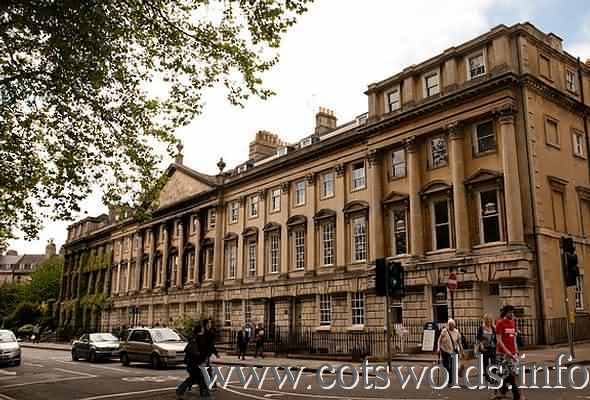 Royal Literary & Scientific Institution Museum 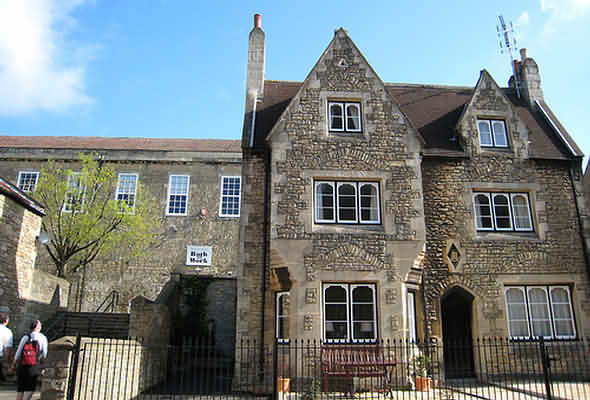 Bath at Work Museum 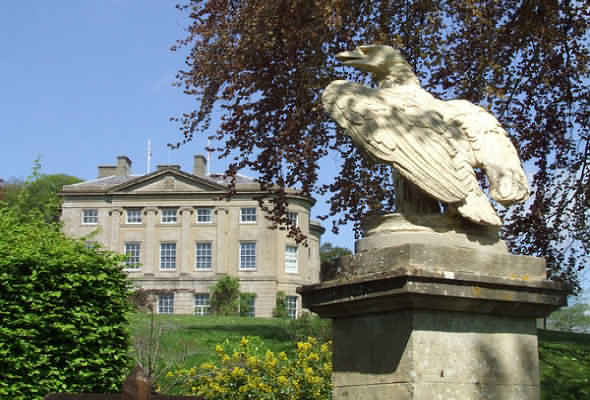 The American Museum in Britain at Claverton Manor 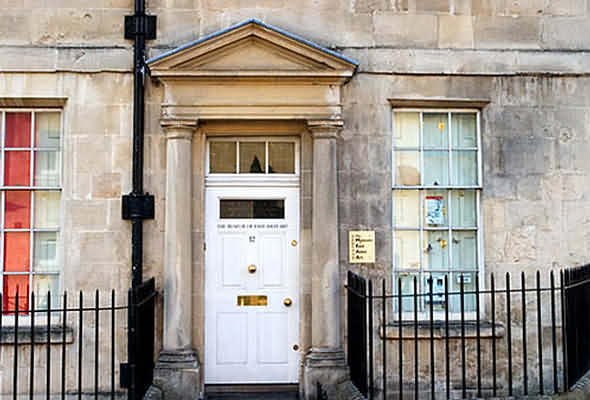 Museum of East Asian Art in Bennet Street near The Circus |
||||||||||||||||||||||||||||||||||||||||||||||||||||||||
|
||||||||||||||||||||||||||||||||||||||||||||||||||||||||
|
||||||||||||||||||||||||||||||||||||||||||||||||||||||||
Museums to Visit in BathThere are several excellent museums to visit and explore in the City of Bath and no visit to the city would be complete without a visit to some. Here we list some of the most important Bath museums to include in your touring itinerary. POSTAL MUSEUM- 27 Northgate Street, (on the corner of Green St.), Bath, BA1 1AJBath has played a vital role in the development of the British postal service and boasts many ‘firsts’, as you will discover when you explore this museum.
Founded in 1979 this fascinating museum has exhibits that date back to late Bronze age with a clay letter of about 2000BC and an Egyptian papyrus of 1200BC. It is known that the Romans had an organised postal system which was called “Cursus Publicus” , this was a network of messengers. Visitors to the museum can see the development of the postal system throughout Medieval times, the Renaissance, Reformation, Georgian, Victorian and present times. The museum was granted £238,500 from the heritage lottery fund this has not only preserved this valuable collection but allowed further improvements to the facilities. Opening Times - 11am to 5pm Monday to Saturday (11am to 4.30pm winter)
Admission charges - Adults £3.50, Concessions £3.00, Students £1.50, Children over 6years For further information Telephone 01225 460333. THE FASHION MUSEUM- Assembly Rooms, Bennett Street, Bath, BA1 2QHOpened in 1771 they were purpose built for the many social occasions being held, Music and dancing, fancy dress balls and generally for the leisure purposes of the period. The collection includes items of Menswear and Womenswear that date back to 1600 and have contemporary displays that feature the designs of Karl Lagerfeld. There are fashions worn by Lady Ottoline Morrell, Molly Tondaimann (Rani of Pudukkottai) and Dame Margot Fonteyn (international ambassador of dance). An extensive collection of accessories are on view and include bags, shoes and gloves. The vast collection of photographs will bring back many memories to the older visitor and to the younger visitor a reminder that fashion continually evolves. The Fashion Museum is open daily (except Christmas Day and Boxing Day): The 2014 admission charge for adults is £8.00, £6.00 for children and £7.25 for concessions. A family ticket (two adults and up to four children) costs £23. Group rates are available. For further information telephone 01225 477173. Website: www.fashionmuseum.co.uk HERSCHEL MUSEUM OF ASTRONOMY- 19 New King Street, Bath BA1 2BLThe Herschel Museum of Astronomy is dedicated to the many achievements of the Herschels, who were distinguished astronomers as well as talented musicians. It was from this house, using a telescope of his own design that William discovered the planet Uranus in 1781. His observations helped to double the known size of the solar system. Following a tradition of the great astronomers of the Renaissance he pushed forward the science of building telescopes. He was rewarded for his work by King George III, and also received the Copley Medal. Caroline also made a huge contribution to the field of astronomy. The work of the Herschels clearly had an impact on modern science and space exploration. Sir Patrick Moore, the patron of the museum, describes William Herschel as “the first man to give a reasonably correct picture of the shape of our star-system or galaxy, the best telescope-maker of his time, and possibly the greatest observer who ever lived”.
The delightful Georgian townhouse museum was once the home of William Herschel (1738-1822) and his sister Caroline (1750-1848) who was also an astronomer. The house was later occupied by the sister of Francis (Fanny) Burney the novelist. The museum was inaugurated in 1981 which was 200 years after the discovery of the planet Uranus. Managed by the Herschel House Trust the museum is open to the public from February to Mid December.
From 1pm to 5pm Weekdays other than Wednesday when it is closed. THE JANE AUSTEN CENTRE- 40 Gay Street, Queen Square, Bath, BA1 2NT
Gay Street is the ideal location for the Jane Austen Centre in Bath, set between two of Bath's architectural masterpieces, Queen Square and Jane Austen actually lived in Gay Street (higher up the hill on the same side, at No.25) for some months in 1805. Her two novels set in Bath, Northanger Abbey and Persuasion, were published in 1818 and both mention the Assembly Rooms. The Jane Austen annual festival takes place in Bath each September. THE HOLBURNE MUSEUM OF ART- Great Pulteney Street, Bathwick, Bath, BA2 4DBThe Holburne Museum of Art was closed to the public in July 2008, as it takes the first steps on the road of a major development project, scheduled for completion in Spring 2011. The development will see the Museum completely refurbished and more space provided for every aspect of its activity through its extension opening onto Sydney Gardens.
The Museum was founded to display the personal collection of Sir William Holburne (also known as Holborne), an important naval officer who grew up in Bath and spent his long retirement here. Widely known for his silver and Old Master paintings, Sir William also collected porcelain, glass, furniture, portrait minatures and Italian bronzes such as the famous 'Kneeling Venus' once owned by King Louis XIV of France. Since Sir William's time the collection has been greatly expanded and now includes landscapes by Francesco Guardi and William Turner and outstanding portraits by George Stubbs, Ramsay, Raeburn, Zoffany and Bath's own artists Thomas Gainsborough, William Hoare and the Barkers of Bath. During the Museum's re-development, items from its collections will be lent to other venues in Bath and nationally. A travelling collection will also be available to schools and community groups whilst the Gardener's Lodge will remain open for its wide range of school and family workshops. In November 2009, The Holburne acquired for its Collection a superb portrait 'The Pitt Family of Encombe' painted by Bath’s foremost painter at the time, William Hoare. The portrait will join old favourites by Gainsborough, Ramsay and Stubbs in the Museum’s spectacular collection of eighteenth-century British portraits. The planned re-opening of the Museum to the public is Spring 2011. There is an entrance from Holburne Museum to Sydney Gardens. Website: www.bath.ac.uk/holburne No.1 ROYAL CRESCENT MUSEUM- Bath BA1 2LRNo.1 Royal Crescent is a magnificently restored Georgian town house that creates a wonderfully vital picture of life in Georgian Bath. A former distinguished resident was the Duke of York, second son of King George III (the son of Frederick, Prince of Wales who visited the It provides visitors to the Royal Crescent with an opportunity to look beyond the famous Palladian façade and see what life was like for the wealthy in 18th century Bath. Each room is an exquisite example of Georgian interior design with authentic furniture, paintings, textiles and carpets. The superbly appointed Dining Room is set for dessert. Pipes and port are laid out for an evening of cards in the comfortable Gentleman’s Study. Upstairs you can see the elegant Drawing Room, where fashionable visitors took tea, or slip into a delightfully feminine bedroom. Below stairs is a splendidly equipped, bustling Georgian Kitchen.
Guides are in every room with stories of the past and to answer questions. Contact Tel: +44 (0)1225 428126, Fax: +44 (0)1225 481850. Radstock Museum- Waterloo Road, Radstock, BA3 3EPAn award-winning museum that offers an insight into North Somerset life since the nineteenth century. It also contains a unique collection of local artefacts, photographs, documents and books relating to the North Somerset Coalfield. The museum is 10 miles outside of Bath at Radstock off the A367 road.
Radstock Museum celebrates the lifestyle of the typical Somerset coalminer. The Museum illustrates not only the home life of the mining families, but also the vibrant social, commercial and industrial structure of the last century. Dedicated areas demonstrate the coalface and the miner's hard, dangerous working conditions. Shop at the Co-op as his wife did over 60 years ago, relive the trepidation felt by his children in the strict Victorian Board School, see how the community life centred round the twin pleasures of the church and the pub.
William Smith, known as the father of English geology moved to the vicinity of Radstock in 1791, he was employed both as a land surveyor and civil engineer, primarily engaged in the execution of a canal connected to local collieries. He was to remain working to promote the canal venture for 8 years. Smith first learned land surveying as a young man in the Cotswold market town of The Radstock Museum acknowledges his importance as a man with an enquiring mind, and one who helped to make the North Somerset Coalfield better known in scientific circles. A new geological display is envisaged by the Museum Trustees. Opening Times: Admission Charges Tel: +44 (0)1761 437722,
Fax: +44 (0)1761 420470,
E-mail: info@radstockmuseum.co.uk Bath Royal Literary & Scientific Institution- 16-18 Queen Square, Bath, BA1 2HNThe Bath Royal Literary and Scientific Institution (also known as BRLSI) is an educational charity based in Bath, England. It was founded in 1824 and provides a museum, an independent library, exhibition space, meeting rooms and a programme of public lectures, discussion groups and exhibitions related to science, the arts and current affairs.
There are two main activities; a programme of talks, discussions and exhibitions on science, the arts and current affairs, and the maintenance and exhibition of the extensive collection of books, fossils and artifacts. Outside organisations also use the premises for meetings. The library contains over 7000 volumes, including the Jenyns and the Broome natural history libraries. Its archives contain bound volumes of letters from eminent scientists and naturalists such as Charles Darwin, Professor John Stevens Henslow and Sir Joseph Dalton Hooker. Smaller collections cover theology, government, travel and local history. Four paintings by Andrea Casali and a photography collection by the Reverend Francis Lockey (1796-1869) are also featured. The geological collections includes the Charles Moore (1814-1881) including over 5000 macro-fossils and his fine collection of Carboniferous coal measure fossils from Radstock, Somerset, is also noteworthy. A very large number of microfossils (probably over a million), predominantly vertebrate teeth and foraminifera, are stored in glass tubes, and some are being actively researched and published today. The general collection includes the fossil and rock collection assembled by William Lonsdale (1794-1871), the Institution's first curator and later a highly respected secretary to the Geological Society of London. Among these are specimens originally arranged in a cabinet by William Smith. A plaster cast of a fully articulated specimen of a Plesiosaur, Rhomaleosaurus cramptoni, is mounted on the wall of the Lonsdale room of the Institution. Other items include cave deposits from Banwell Cave, Wookey Hole and Kent's Hole on the Mendips. There is a shell collection with over 3,700 specimens of land, freshwater and marine shells. The latter include many exotic specimens, some quite rare. They have been worked on and labelled by Charles Copp and cleaned and supplied with better storage. The Jenyns collection of British shells is still housed in his cabinet and has been cleaned and catalogued by Rear Admiral Tracy. Jenyns described several new species, so his collection probably includes some that are scientifically important. For further information see website - BRL SI Museum of Bath at Work- Camden Works, Julian Road, BATH, BA1 2RHThe centrepiece of the Museum, covering an entire floor, is the reconstructed engineering and soft drinks factory of Victorian businessman J B Bowler. Walk through the workshops and offices and see a complete soft drinks and bottling plant. Some of the machinery is in working order and there are regular demonstrations. Audio guides are available free of charge and guided tours are provided when possible.
An introduction to the city’s development is given in ‘Bath at Work: 2000 Years of Earning a Living and an exhibition on invention and the landscape of working Bath, ‘Bath in Particular’ is on show in the ground floor Hudson Gallery. On the other floors there are a reconstructed Bath Stone mine, complete with dripping water, reconstructed workshops of a Bath cabinet maker, an unusual 1914 Horstmann car with kick starting, a Bath Chair exhibited at the Crystal Palace exhibition of 1851, a copy of The Hound of the Baskervilles printed in Pitman Shorthand, a singular example of a six-stroke double acting gas engine made by local inventor Samuel Griffin and a unique self winding clock of 1866 built in the city. The Museum is housed in a former Real Tennis Court, built in 1777. The Museum is close to the Assembly Rooms, Circus and Royal Crescent. For further information see website - Museum Bath at Work Museum of East Asian Art- 12 Bennett Street, Bath, BA1 2QJThe Museum of East Asian Art is located a few metres from The Circus in central Bath and is one of the most unique art collections in England. Situated in a restored Georgian house, the Museum attracts the interest of students, scholars and tourists, and also has a loyal local following. Since opening to the public in April 1993, the Museum has gone from strength to strength, and has become one of the most extensive collections of East Asian art outside London. With a collection of almost 2,000 objects, ranging in date from c.5000 BC to the present day, the Museum offers its visitors a wonderful insight into the art and cultures of China, Japan, Korea and Southeast Asia. With one of the most comprehensive jade collections in the UK and some of the finest bamboo carvings in Europe, the collection uncovers the finest achievements in East Asian craftsmanship.
The Museum’s excellent and wide ranging collection is interpreted in a lively and innovative manner. Particular attention is given to the Museum’s educational role, with special exhibitions, an active events programme and new publications designed to encourage a greater understanding of East Asian art and cultures. The Museum was founded in 1990 by Brian McElney OBE. Brian spent his entire working life practicing law in Hong Kong and it was during this time that he was drawn to the beauty of Chinese art. In 1958 he bought his first piece, an ivory goat and kid, after which Brian’s collection grew to include jades, ceramics, scholar’s studio objects and bronzes. After his retirement from law in 1983, Brian returned to England and procured the funds for the restoration and refurbishment of the Georgian building that houses the Museum. Mr McElney generously donated his private collection to form the Museum, which he had created as a UK educational charity. For further information see - Museum for East Asian Art Building of Bath Collection MuseumThe Countess of Huntingdon’s Chapel, The Vineyards, The Paragon, Bath BA1 5NA This unique collection interprets the rich architectural history of Bath and the men who transformed a provincial town into the world famous Georgian Spa. It demonstrates how classical design influenced the buildings and illustrates the construction of a house from the cellars to the rafters.
Based in the historic Countess of Huntingdon’s Chapel, the building is also home to the historic Bath Model, a fully detailed architectural model of the historic city centre, giving a unique insight into the layout of the Georgian City. As well as opening to visitors during the season, the Chapel houses study days and events from February to November for adults and young people, open to all. For more information on this website see - Buildings of Stone | Building of Bath Museum Beckford's Tower- Lansdown Road, Bath BA1 9BHThe Tower is home to a museum collection displaying furniture originally made for the Tower, alongside paintings, prints and objects illustrating William Beckford’s life as a writer, collector and patron of the arts.
The Tower is an extraordinary building that stands today as the only surviving example of William Beckford’s great architectural achievements. Beckford’s Tower & Museum is owned by the Bath Preservation Trust, and administered by the Beckford Tower Trust. Opening TimesSaturday 3rd April – end of October 2010 10.30 am-5.00 pm Open Saturday, Sunday and Bank Holiday Mondays. Weekdays by arrangement Admission ChargesAdults £3.00; Concessions, Senior Citizens, Students £2.00; Children: 0-5 free, 5-16 years £1.50; Groups £3.00 per person, Schools £2.00 (adults free); Family Ticket £8.00. Sally Lunn's- 4 North Parade Passage Bath, BA1 1NXNo visitor to Bath should miss Sally Lunn’s. It is the strangest mix of tourist attraction, great eatery and museum. Tucked away in a narrow alley near other excellent restaurants and coffee shops, Sally Lunn’s Refreshment House offers excellent food at reasonable prices in a slice of priceless Bath history. When you enter Sally Lunn’s you are stepping into a quaint house that was built circa 1482. It’s the oldest house in Bath and there aren’t many older in Britain. The house became the present establishment in the 1680s, when Sally Lunn, a young French girl, emigrated to Bath, bringing with her a recipe for a light, sweet bun (think bread roll or hamburger bun, rather than sweet cake), which became her trademark and brought a steady stream of traffic to her door. Sally Lunn's Kitchen MuseumThe visitor’s meal receipt is accompanied by a free ticket to what lies down a steep flight of stairs – the museum and archaeological dig. In Bath, tourists will surely visit the Roman Baths, where they descend below street level to see the unearthed remains of the Roman era, including many antiquities. At humble little Sally Lunn’s, a similar world unfolds beneath the street.
There Sally Lunn’s original 300-year-old kitchen is laid out. Cooking ranges, griddles, ovens, boards for sliding pies and cakes in and out of ovens, an open hearth and dozens of antique pots and appliances. Then the greatest surprise. Through a glass pane, the visitor can look further down into an excavated area and see the Roman remains of the building. The various levels of occupation are identified and some items found are displayed in a case. Open daily 10am - 6pm (11am Sundays) Admission just 30p for adults FREE admission for children and OAPs or all guests who take refreshment. Bath Abbey Heritage Vaults Museum- Abbey Churchyard, Bath, BA1 1LY
Bath Abbey Heritage Vaults are built over a medieval monks' cloister. The museum provides a concise but complete history of the religious and civil influences on the Abbey. Stonework and artifacts from Anglo-Saxon and Medieval periods are preserved for viewing, as well as a skeleton of a woman found buried with the monks. Other visual and audio exhibits complete your tour through over one thousand years of history on the site. A gift shop is located in the Abbey itself, offering merchandise, such as cards, Christian books, music and jewelery. Open Monday - Saturday 10.00 am - 4.00 pm The American Museum- Claverton Manor,Bath BA2 7BDThe American Museum in Britain located 4 miles east of Bath and founded not only to display fine American furniture and decorative arts, but also as a means of fostering greater Anglo-American understanding. For more detailed information on this website see - American Museum. |
||||||||||||||||||||||||||||||||||||||||||||||||||||||||
|
||||||||||||||||||||||||||||||||||||||||||||||||||||||||
| BACK TO TOP | ||||||||||||||||||||||||||||||||||||||||||||||||||||||||
Museums to Visit in Bath |
||||||||||||||||||||||||||||||||||||||||||||||||||||||||
| This page last modified Friday, 12-Mar-2021 15:07:02 CET | ||||||||||||||||||||||||||||||||||||||||||||||||||||||||





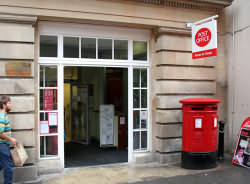 The key figures involved with the development of Bath Post Office were
The key figures involved with the development of Bath Post Office were 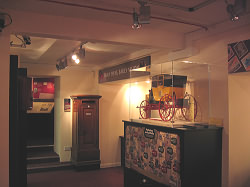 Different types of post boxes are illustrated by cast metal boxes that cover the period from 1854 - 1998
Different types of post boxes are illustrated by cast metal boxes that cover the period from 1854 - 1998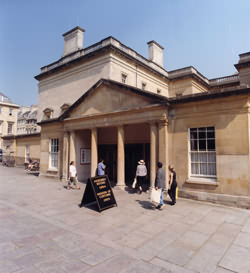 See fashion through the centuries by visiting this excellent museum housed in these superb Assembly Rooms.
See fashion through the centuries by visiting this excellent museum housed in these superb Assembly Rooms.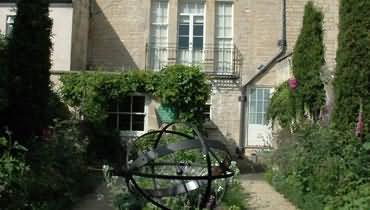
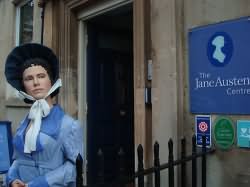 The Jane Austen Centre houses a permanent exhibition which tells the story of Jane's experience in the city between 1801 and 1806 and the effect that living here had on her and her writing.
The Jane Austen Centre houses a permanent exhibition which tells the story of Jane's experience in the city between 1801 and 1806 and the effect that living here had on her and her writing.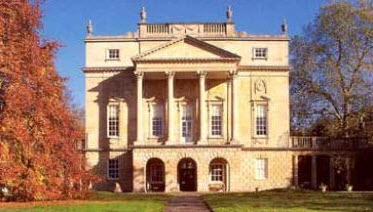
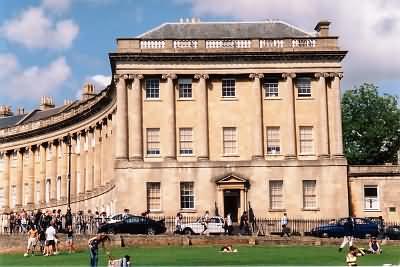
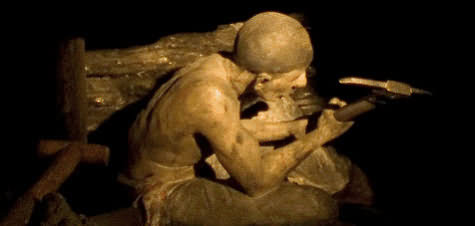
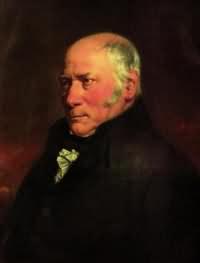 The typical miner's sporting activities focussed on football, quoits and pigeon-racing – all well documented within the Museum. The Friendly Societies formed the safety net for the mining community in times of need and pit disasters. The Great Western Railway and the Somerset & Dorset Railway, which superseded the Somersetshire Coal Canal, impacted greatly on the community, with Radstock/GWR Station adjacent to the Market Hall.
The typical miner's sporting activities focussed on football, quoits and pigeon-racing – all well documented within the Museum. The Friendly Societies formed the safety net for the mining community in times of need and pit disasters. The Great Western Railway and the Somerset & Dorset Railway, which superseded the Somersetshire Coal Canal, impacted greatly on the community, with Radstock/GWR Station adjacent to the Market Hall.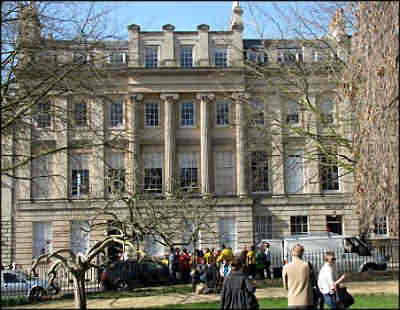
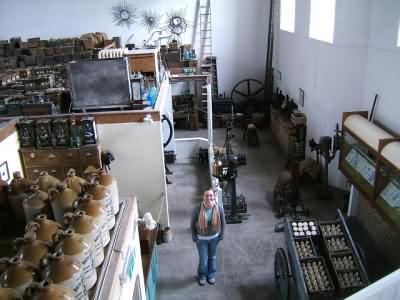
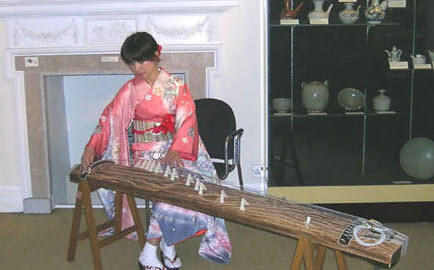
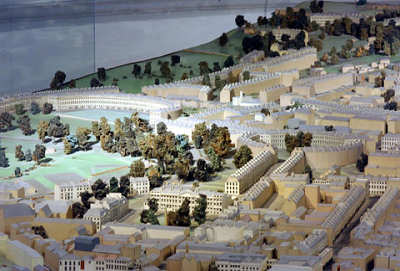
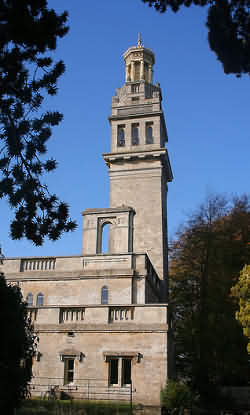 Visitors can follow in Beckford’s footsteps and climb the spiral staircase (pictured) to the beautifully restored Belvedere and experience the spectacular panoramic view of Bath.
Visitors can follow in Beckford’s footsteps and climb the spiral staircase (pictured) to the beautifully restored Belvedere and experience the spectacular panoramic view of Bath.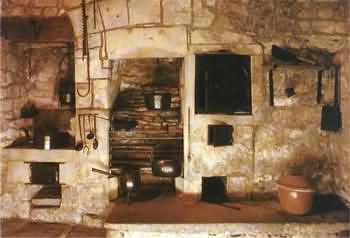
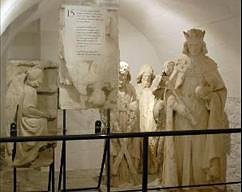 Bath Abbey Heritage Vaults Museum is situated on the south side of
Bath Abbey Heritage Vaults Museum is situated on the south side of 